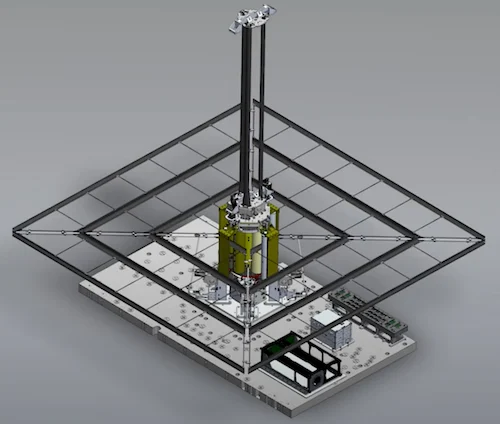Recently, a SpaceX Falcon 9 rocket delivered a 50-kilogram Space Solar Power Demonstrator (SSPD) along with 116 satellites into orbit, developed by scientists at Caltech.
Researchers from this institute are not the first to consider the possibility of harvesting solar energy in space. However, they have recently paved the way for real experiments in Earth’s orbit. Thus, the idea of harvesting renewable energy in space is finally starting to take shape.
The potential of these innovations is also linked to the fact that there are no natural obstacles to collecting solar energy in the space environment, as there are on Earth. On our planet, the main drawback of solar energy extraction is the dependence on daylight, the seasons, and cloud cover.
First of all, innovative space technologies will be valued in those areas of our planet where difficulties with electricity supply are most pronounced.
What is SSPD?
The amazing SSPD installation aims to demonstrate the effectiveness of collecting solar energy in space and subsequently transmitting it to Earth using wireless transmission (microwaves).
The SSPD prototype consists of three sections, each of which will conduct a separate series of experiments, the publication reported. Newsweek .
The first section, covering an area of about four square meters, is DOLCE (Deployable on-Orbit ultraLight Composite Experiment) – it will test the deployment mechanisms of modular spacecraft. As explained by Caltech, it will be a solar power station in the form of a complete “constellation of spacecraft on a kilometer scale.”
The second section – ALBA – combined 32 types of photovoltaic cells. Researchers now have the opportunity to determine which of them are the most effective in the harsh conditions of space.
And finally, the third section – MAPLE (Microwave Arrays for Low-Orbit Energy Transfer Experiment). Using this collection of flexible microwave transmitters, researchers will test the possibilities of wireless energy transfer.
Testing the orbital solar power station will take quite a bit of time. However, the team hopes to obtain a full assessment of its performance within a few months.
“No matter what happens, this prototype is a significant step forward,” said Ali Hajimiri, a professor of electrical engineering and medical engineering at Caltech and one of the project leaders.

